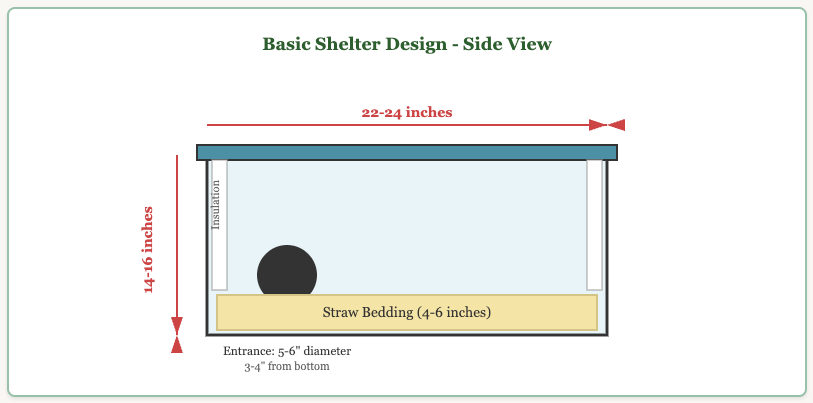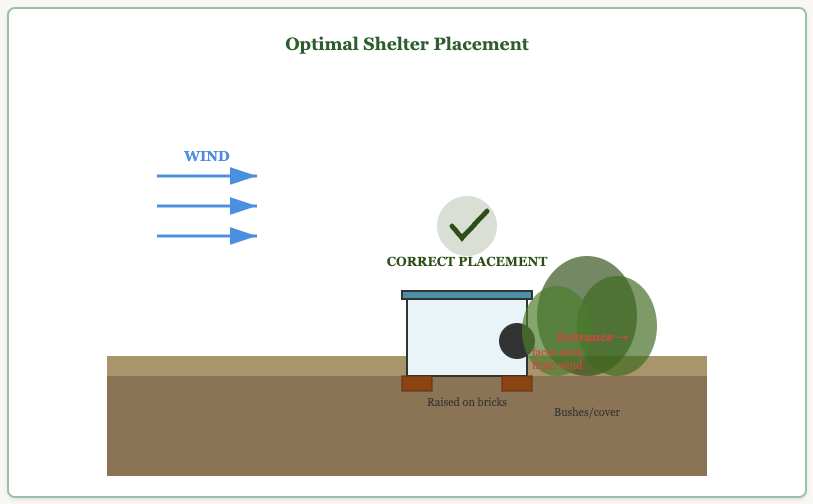As temperatures drop, feral and stray cats face serious dangers from the cold. Unlike their indoor cousins, these community cats don’t have the luxury of a warm home to retreat to when winter arrives. Building a shelter for outdoor cats is a compassionate way to help them survive harsh weather, and it’s easier than you might think.
Why Outdoor Cats Need Shelters ❄️
Feral and stray cats are remarkably resilient, but extreme cold, wind, and wet conditions can be life-threatening. Hypothermia and frostbite are real risks, especially for kittens, elderly cats, or those in poor health. A well-designed shelter provides:
- Protection from wind, rain, and snow
- Insulation to retain body heat
- A dry, safe place to rest
- Reduced stress and improved survival rates
Choosing the Right Materials 🧰
The best cat shelters are weatherproof, insulated, and sized appropriately. Here’s what you’ll need:
Container options:
- Large plastic storage bins with lids (18-gallon totes work well)
- Styrofoam coolers
- Rubbermaid containers
- Wooden boxes (though these require more weatherproofing)
Insulation:
- Straw (NOT hay, which retains moisture and can cause mold)
- Styrofoam sheets
- Mylar blankets
Additional supplies:
- Waterproof tape or silicone caulk
- Utility knife or saw
- Measuring tape
Step-by-Step Construction 📏
The Basic Plastic Bin Shelter
This is the simplest and most popular design:
- Create the entrance: Cut a 5-6 inch circular doorway on one side of the bin, about 3-4 inches from the bottom. This keeps the opening small enough to retain heat while allowing cats to enter comfortably.
- Add insulation: Line the walls with styrofoam sheets, securing them with waterproof adhesive or tape. Leave the bottom clear for now.
- Fill with straw: Add 4-6 inches of fresh straw to the bottom. Straw is crucial—it stays dry, provides excellent insulation, and allows cats to burrow and create warm pockets.
- Secure the lid: Make sure the lid fits tightly. You can add weight on top (like bricks) to prevent it from blowing off in strong winds.
- Weatherproof: Place the shelter with the entrance facing away from prevailing winds. You can also wrap the exterior in a tarp or place it under an overhang for extra protection.
The Two-Bin Method (Extra Insulation)
For even better insulation in extremely cold climates:
- Use two plastic bins, one smaller than the other
- Cut doorways in the same location on both bins
- Place the smaller bin inside the larger one
- Fill the gap between the bins with straw or styrofoam
- Fill the inner bin with straw bedding
Placement Tips
Where you put the shelter matters as much as how you build it:
- Choose elevated ground to avoid flooding and moisture
- Face the entrance away from wind and prevailing weather
- Place near familiar feeding areas where cats already congregate
- Provide some camouflage by placing shelters near bushes or under porches
- Create a windbreak with hay bales, boards, or natural barriers
- Consider multiple shelters to prevent dominant cats from excluding others
Important Design Considerations
Size matters: A shelter should be large enough for a cat to stand up, turn around, and lie down, but not so large that body heat dissipates. For multiple cats, bigger is fine—they’ll huddle together for warmth.
Two exits can save lives: Some experts recommend cutting a second small exit hole on the opposite side. This gives cats an escape route if a predator blocks the main entrance.
Avoid blankets and towels: While they seem cozy, fabric materials absorb moisture and can actually make cats colder. Stick with straw.
Raise it off the ground: Place the shelter on bricks, pallets, or lumber to keep it elevated and dry.
Maintenance Throughout Winter
Your work isn’t done once the shelter is built:
- Check straw weekly and replace if it becomes damp or soiled
- Clear snow away from entrances after storms
- Monitor for damage from weather or animals
- Provide fresh food and water daily (use heated bowls if possible)
Additional Ways to Help
Beyond shelters, you can support outdoor cats by:
- Participating in TNR (Trap-Neuter-Return) programs to stabilize the colony
- Providing regular feeding stations with high-calorie food
- Offering unfrozen water using heated bowls or changing it frequently
- Checking under car hoods before starting your engine (cats often climb up for warmth)
A Final Word
Building a shelter for feral and stray cats is a simple act of kindness that can literally save lives. With just a few dollars worth of materials and an hour of your time, you can provide crucial protection to vulnerable animals in your community. While these cats may never seek human affection, they absolutely deserve our compassion and help surviving the harsh realities of outdoor life.
Remember, you’re not encouraging cats to remain outdoors—you’re acknowledging the reality that they’re already there and need our help. Combined with TNR efforts and community support, winter shelters are an essential part of humane cat colony management.
Stay warm, and help our feline neighbors do the same.




